There is no shore diving site quite like the Silfra fissure in Iceland, famous for being, well… a giant crack in the earth. The clue’s in the title, after all!
Proximity to the Arctic circle, rapidly changing weather patterns, ancient glaciers… when it comes to cold, Iceland’s got it covered – big time.
Iceland is a volcanic island of striking landscapes; skyscraping volcanos, glacial rivers turning into waterfalls, barren deserts where you feel like you’re on the surface of the moon. This Viking country is perhaps best described as the land of fire and ice, in which the regions natural elements come alive in a very extreme way.
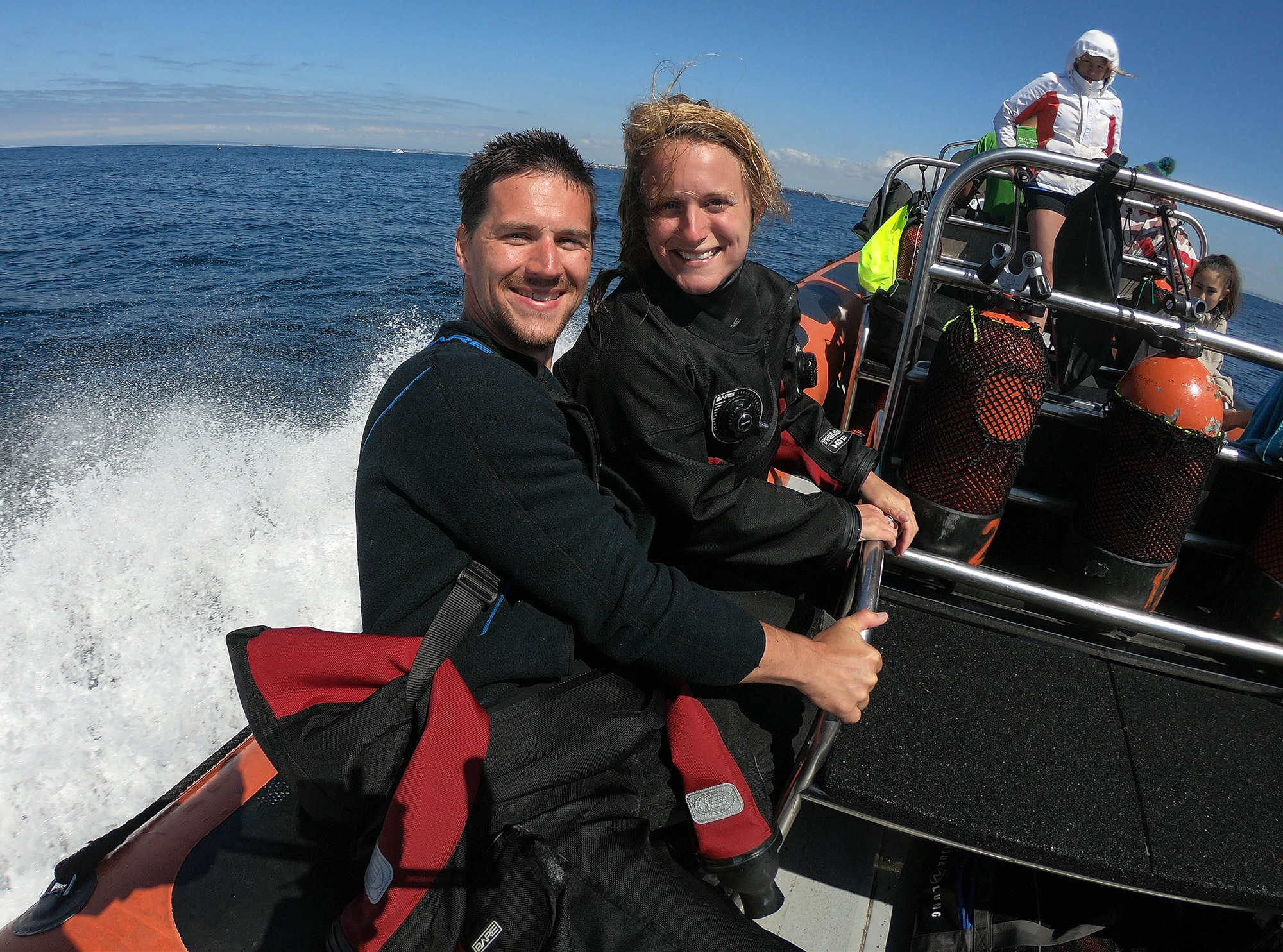
The continent of Europe is a magical place. If you’re captivated by natural wonders like the ones we discovered in Iceland and want to explore them further, consider exploring opportunities for travel and tourism jobs abroad.
For most, after the unpredictable weather and relatively cold climate, diving in Iceland seems like an absurd idea. For others, you can’t even mention the country of Iceland without hearing about the world renown Silfra dive site. Lucky for us, a little cold never shied us away from trying our hand at diving one of the coldest and clearest diving locations in the world.
The Silfra is known as one of the top dive sites worldwide for two main reasons.
The first being that it is one of the clearest spots to dive with visibility exceeding 100 meters (that’s almost 330 feet!).
The unique water clarity comes from melting glacial runoff that is filtered through porous underground lava rock eventually reaching Thingvellir Lake. In total the underground wells that feed the drinkable glacier water to the lake takes about 30 to 100 years to filter the water.

The second reason, the Silfra is a top dive site, is that it is the only place in the world where one can dive between two continental plates, the North American and Eurasian.
The idea behind continental or tectonic plate theory is that geologically the outermost shell of the planet is sitting on top of a liquid mantle or core of the earth. That shell is split up into eight separate plates or pieces that all fit together like a jigsaw puzzle. These plates are always moving (very slowly that is) creating extraordinary natural landscapes and phenomenon such as mountain ridges, volcanoes, deep ocean trenches, and earthquakes.

Being avid cold water divers from Canada, Joey and I have had our sights on diving the Silfra for a couple of years. I mean, can you really blame us? As a world-class dive site, it seems only natural that it would end up on our very ambitious scuba bucket list.
As luck would have it not long after getting our drysuit certification, we planned an extensive camping/road trip around this volcanic island, and as you can probably already tell diving, the Silfra was right at the top of our trip itinerary.

After booking our Silfra diving experience online a couple of months in advance of our trip, the day finally came for our excursion with the dive outfitters.
It was about 45 minutes (or 40 kilometers) by car from Iceland’s capital city of Reykjavik to Thingvellir National Park, the site of the world renown Silfra crack.
On dive day, the weather was indecisive, but apparently, that’s completely normal in Iceland (or so we were told). Gray storm clouds filled the sky with the occasional slender beam of sun that would seep in through an opening above.
In the early hours of the morning, we were picked up at our hotel by our dive guides and shuttled to Thingvellir National Park. The van was full of people from all over the world, who like us, had traveled far and wide to experience the magic of the Silfra. On route, the friendly guides introduced themselves and enlightened us with some information and history on the rugged landscape that surrounded us.
Any Game of Thrones fans will be stoked to know that we even passed by many of the outdoor battle filming locations used in the famous HBO T.V. series.

Upon our arrival at Thingvellir National Park, our first stop was at the registration office, where we had a chance to stretch our legs, and the dive outfitter registered our group for the day’s diving activities. Then it was onward and forward to the Silfra!
We pulled into the dive site, and I could see right away it was a busy beehive of activity with groups of both snorkeling and diving tours getting in and out of the water. I could not believe how many brave souls had come to torture their body in two-degree glacial waters.

At such a pricey dive, it was convenient nice when our two divemasters insisted on taking care of all the heavy lifting and set up most of our equipment. It gave me a chance to soak in my surreal surroundings.
As we waited on our equipment preparation, we were given a quick dive briefing and a little geography lesson on the landscape before us. Like a sponge, I sucked in the knowledge to no end.
Following the dive spiel, the moment had finally come. It was time to suit up in our dry suits.

Even from the shore, you could see far down into the depths of the Silfra crevasse. Once our group was good to go, we descended the metal staircase into the water. At about waist height there was a dive platform, which divers could get mask, fins, and regulators in place before sinking into the waters below.
First putting my head in literally took my breath away. Instantaneously, my head started to hurt from the cold piercing through the neoprene hood I had on my head. My toes curled, and my teeth clenched together as that brain freeze took over my body, a sensation that would stay with me for the entirety of the dive.
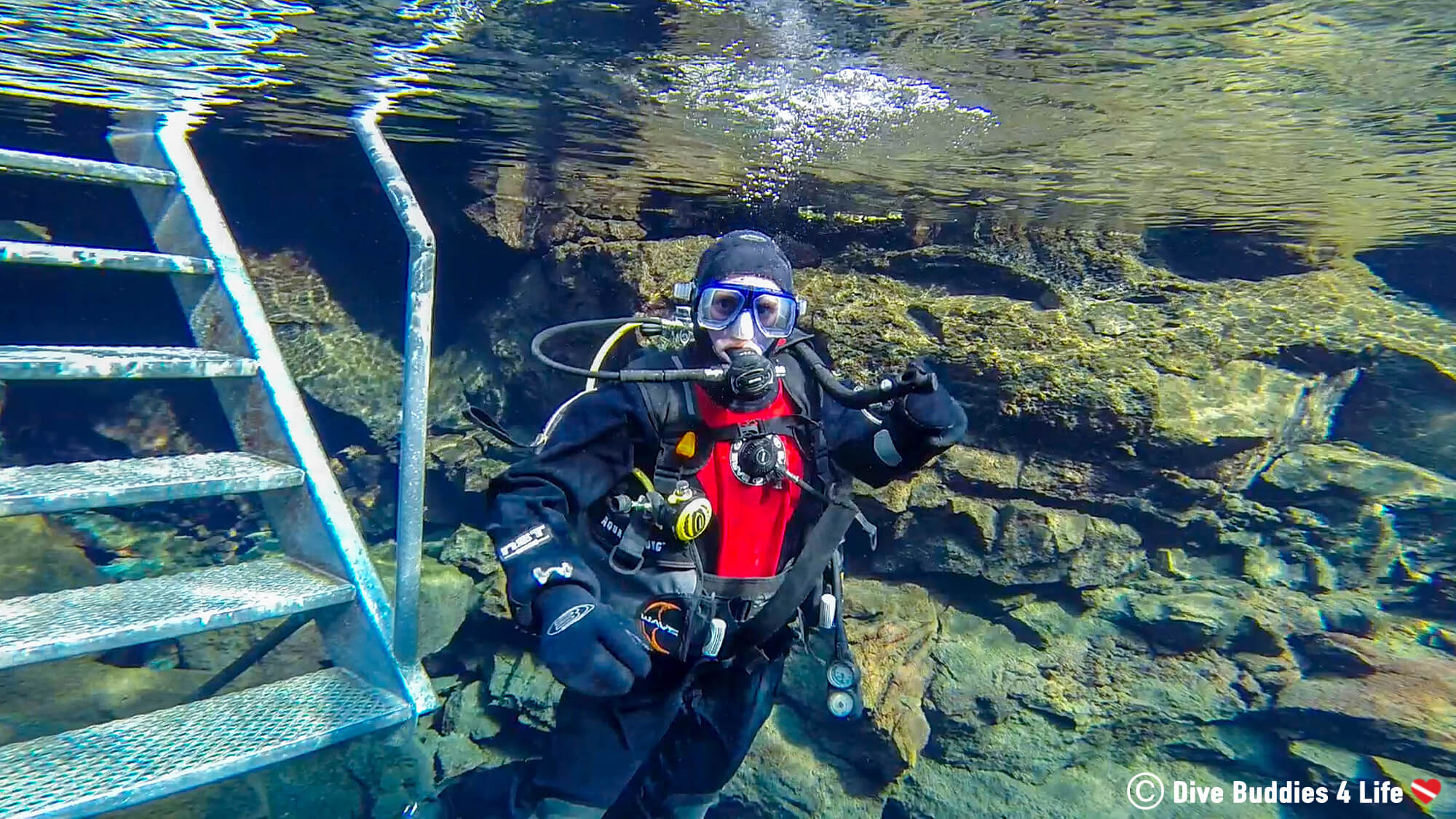
Eventually, my body got used to the unpleasant sensation, and I started to look around and take in the towering rock formations around me. The Silfra was no ordinary diving place.
Far in front of me, the continental divide stretched off into the distance as far as the eye could see. To the right, to the left, and many meters down, all I could see were bands of blues with nothing getting in the way. Suddenly the cold and cost of the dive feel like a worthwhile trade-off.
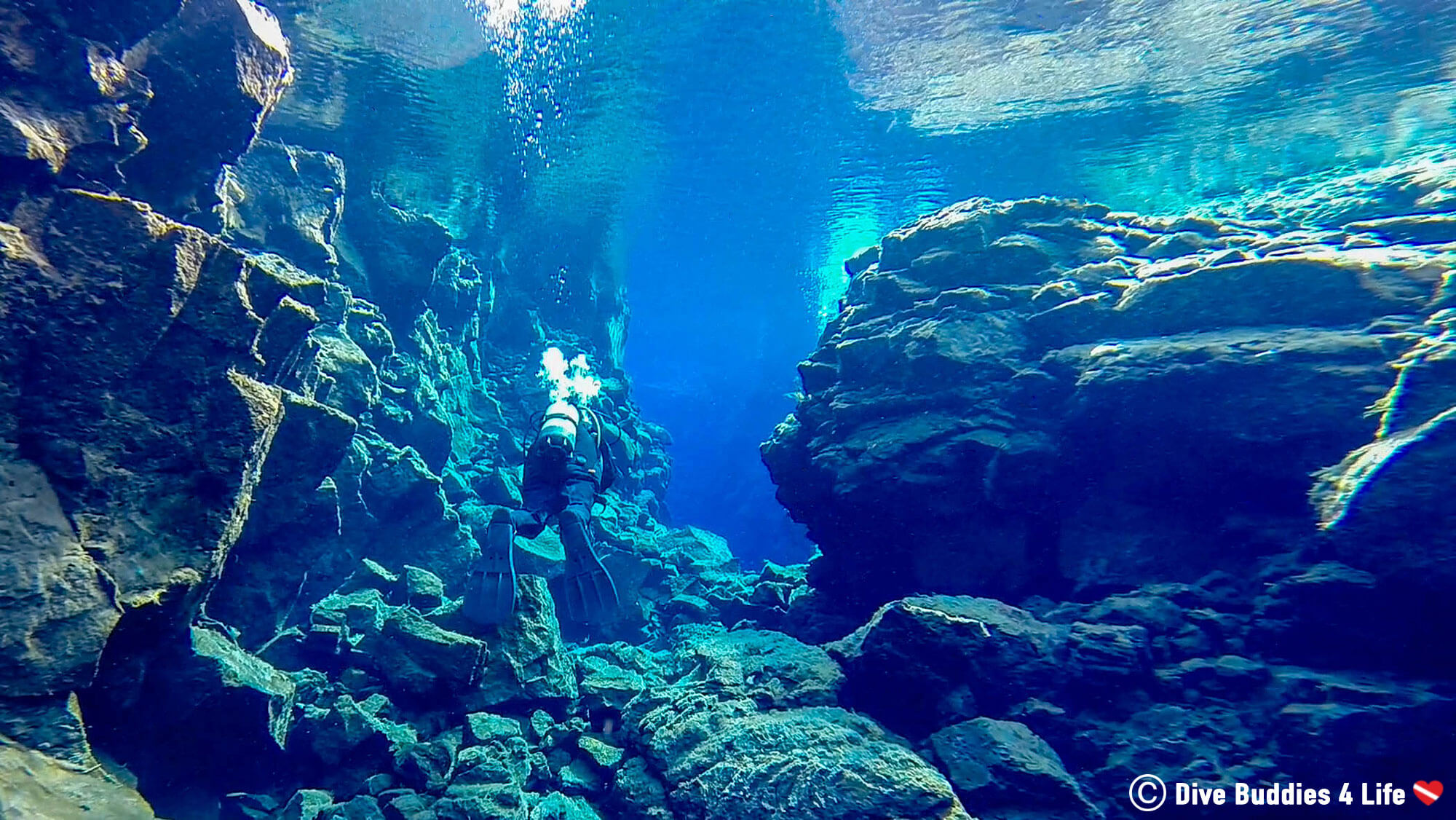

Porous jet black volcanic rock makes up a good portion of the Silfra as we pass through the Big Crack and into the Silfra Hall. As much as I searched, I couldn’t find a single fish species as we drifted down a little deeper into the fissure. The only life forms I observed in the crack was the flailing bodies of divers and snorkelers bobbing around in drysuits.
Peppered all over the lava rock was lime green algae or “troll hair” as the guides like to call it, giving a splash of color to this magnificent aquatic landscape.

We arrive at the section where both the North American and Eurasian plates are close enough that while diving, we can touch both sides. What a fantastic feeling, to not only learn about unusual geological occurrences but to also experience one. Joey, Dad and I each take our turn posing touching both cave sides.
After all, our photographs were taken we continue swimming towards the section of the Silfra known as the Cathedral.

The Cathedral is a large open chamber that reached a depth of about 66 feet, making it the deepest point of the Silfra dive.
The sun must have decided to come out because small rays of light radiated off the pure white sand at the far end, giving an illuminating appearance to the water around us.

The glacial current continued to push us along gracefully, through the pearly stillness of this divine section, and onwards through the waters. As the rocky walls tapered down, the divemaster made a sharp left handed turn from the Cathedral navigating away from the current pushing us towards Thingvellir lake. Our group followed, not wanting to be swept into the center of the lake and needing to be rescued by boat.
Quickly navigating between rocks that barricaded the way I floated into a picturesque lagoon, the endpoint to our dive. Just look at the unearthly green and blue colors of this water pool. It was unlike anything I had ever seen before!


The first dive lasted about thirty minutes, but in those thirty minutes, I was already having a hard time with my finger dexterity. Don’t get me wrong dry suits are great at keeping you dry, but what they don’t do is keep you warm. Warmth is all in the insulation and layers of clothes you put on under your suit.
Some much-needed cookies and hot beverages were served between dives while we took our surface interval. The guides swapped out our tanks much to my relief, as I couldn’t feel my fingers let alone deal with fine-tuning all the valves.


After what felt like seconds, it was time to freeze our butts off all over again. I had only just started to warm up from the first dive.
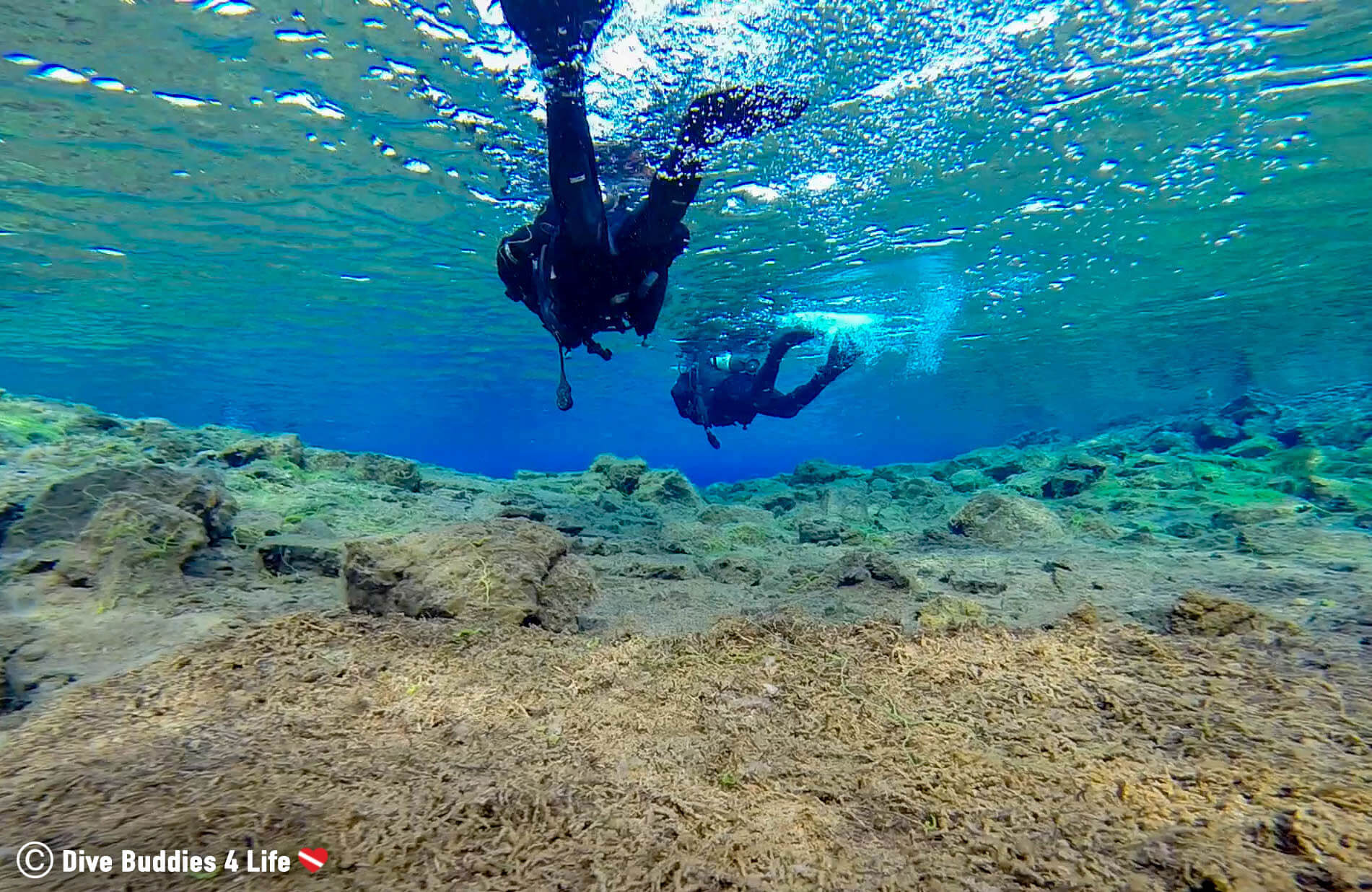
Our second dive was a lot shorter than the first, with a bottom time of only about 20 minutes. I think it was a record for the shortest dive I have ever done. By the time we surfaced, rain was falling like pins and needles on the ground. I was so cold I could barely walk myself back across the street to our van. Who would have thought my limbs would feel like popsicles after only an hour of diving in a drysuit. Somehow I made it there and managed to disassemble all my gear.

Shore support mom was ready to bundle me up in any extra clothes we had and got us all hot chocolate to warm our bodies from the inside out. It took several cups of hot chocolate and a good night’s rest buried under a mountain of blankets before the chill of the Silfra left my bones.
Call me crazy, call me suicidal for putting my body through all that torture, but as an adventurer at heart, some experiences are worth the frostbitten limbs.

Brrrrrrrr, dipping into the Silfra was chilly, it brings me brain freeze just thinking about it. What is your coldest scuba diving experience?
Writers Note: This post may contain affiliate links. We will make a small commission if you make a purchase through one of these links, at no extra cost to you. See full disclosure and disclaimer policy here.


Do you enjoy cold water wreck diving? This dive destination will let you experience the best shipwrecks and scuba diving opportunities on the Canadian east coast.

The world knows the Netherlands for their windmills and clogs, but what is not as well known is the excellent shore diving in the southern province of Zeeland.

From planes to cars, diving Vobster Quay means experiencing a range of underwater sights and covering a lot of ground in little time.

Is your scuba diving feeling a bit too routine? Shake things up and try scuba diving in this unique German dive location - we promise you won't be disappointed.

Nothing compares to the thrill of diving to a helicopter, airplane, army car, and double-decker bus all in one dive. Don't miss this epic diving jungle in England.
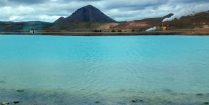
Take a dip in the Blue Lagoon and the Mývatn Nature Baths, two of Iceland's best geothermal hot springs.

The Fossatún troll gardens is a neat spot to check out and learn about Icelandic fables and superstitions.

Try these 9 adventures and truly feel like you have lived it up on your vacation to Iceland.

Iceland's pristine beauty is world renowned and after having visited 8 different waterfalls around the country we now understand why.
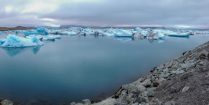
Seeing the beauty of Iceland's world renowned Jökulsárlón Lagoon was a jaw dropping experience. Check out our frigid adventure.

Iceland's natural beauty is overwhelming, specifically around Mývatn. Check out the top 5 places to hike in this region.

Would any additional or different underlayers have helped with the cold that you would recommend in retrospect?
Unfortunately, this is one of the coldest dives on the planet and there is a certain amount of cold that must be tolerated. I think the only thing that would have helped would be battery-powered heated underlayers.